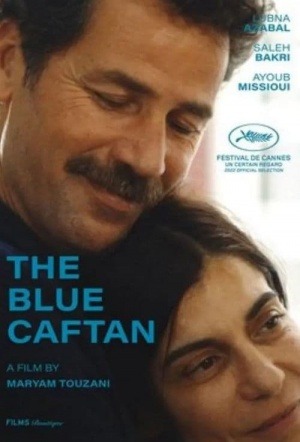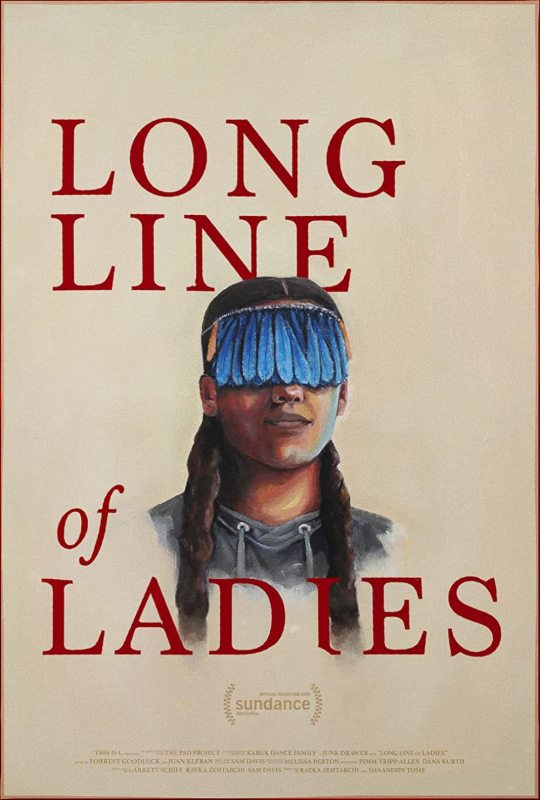#rita baghdadi
Text




SIRENS (2022) dir. RITA BAGHDADI
57 notes
·
View notes
Photo










Some 2021-2022 Films by SWANA/MENA Filmmakers
Bones and All (2022). Dir. Luca Guadagnino
Sirens (2022). Dir. Rita Baghdadi
Burning Days (2022). Dir. Emin Alper
Holy Spider (2022). Dir. Ali Abbasi
Costa Brava, Lebanon (2021). Dir. Mounia Akl
Land of Dreams (2021). Dir. Shoja Azari & Shirin Neshat
The Swimmers (2022). Dir. Sally El Hosaini
Boy From Heaven (2022). Dir. Tarik Saleh
Harka (2021). Dir. Lofty Nathan
The Blue Caftan (2022). Dir. Maryam Touzani
#bones and all#The Blue Caftan#the swimmers#sirens#film#burning days#Holy Spider#costa brava lebanon#land of dreams#boy from heaven#harka#algerian#jordanian#moroccan#lebanese#egyptian#iranian#turkish
480 notes
·
View notes
Photo

New poster for Rita Baghdadi’s Doc film SIRENS
Premiering at The Sundance Film Festival.
MM
#sirens#film#poster#movie poster#slave to sirens#doc film#documentary#rita baghdadi#midnight marauder
46 notes
·
View notes
Text
Nobody's a Slave to Sirens, A Documentary Review
Slave to Sirens is hitting the #documentary #movie circuit with Sirens, a fascinating look at their beginnings and what they still have to face today's #heavymetal #music community! It played at @fantasiafest in Aug, and now the #USA! #review at:
Rolling release beginning Oct 7, 2022
Emerging out of the Middle East is Slave to Sirens, a thrash metal band wanting to prove to the world they’re unstoppable. In addition to allowing their journey to be filmed, what we see is a story different from mythology. Here, nobody is being lured to false promises and find themselves drowning in the river of life.
Instead, what Sirens, the documentary by…

View On WordPress
2 notes
·
View notes
Photo

new-to-me #56 - Sirens
9 notes
·
View notes
Text
Sundance Interview with “Sirens” Director Rita Baghdadi
Sundance Interview with “Sirens” Director Rita Baghdadi
By Morgan Roberts Premiering at this year’s Sundance, “Sirens” is a documentary feature film following the lives of the women in the Lebanese metal band Slave to Sirens. The film explores the complexities of being in an all-female band, being misunderstood by society, and finding one’s voice. The film is directed by Moroccan-American filmmaker Rita […]Sundance Interview with “Sirens” Director…

View On WordPress
1 note
·
View note
Text
True/False 2022: Capsules

Factory to the Workers: Srdan Kovacevic’s plaintive doc follows the steady sinking of ITAS, a worker-owned machine parts factory in Croatia. Having survived the 2005 attempt to privatize the company in the wake of the fall of Yugoslavia, the company continued on another decade of good production, but with many of the older workers retiring, and the young hires jumping ship to fully privatized factories elsewhere, the place has hit hard times. As a fly-on-the-wall recording of the mounting discord and unhappiness with the current managing director, a man actually named Bozo, Kovacevic’s camera captures the grim reality the factory is facing, getting squeezed on all sides (apart from everything else, Bozo laments that the quality of work the factory is producing isn’t helping their cause), as unpaid salaries and bills continue to pile on. Eventually, Bozo is removed, in favor of another cagey veteran of the factory named Varga, whose sunken cheeks and grim bearing bring to mind Ed Harris. Varga promises the workers he will make it work somehow, but by the end, it seems pretty clear, even with his prior experience (he was instrumental in saving the factory back in 2005, acting as their legal representative, even though he wasn’t a lawyer), he’s about as out of ideas as the previous leader. He offers to perform a hunger strike, but few of the remaining workers believe that will ultimately make any sort of difference. The film is dry as a bone, giving one the horrible, sinking feeling of a listless ship taking on water. For anyone who has ever experienced working for a company whose fortunes are clearly on the decline, you can expect significant PTSD. As becomes increasingly clear, a worker-owned model faces horrific challenges in the modern economic climate.
Sirens: I’m no metal-maven, but I could totally appreciate Rita Baghdadi’s loving ode to Lebanon’s first all-female thrash metal band, Slave to Sirens. Led by guitar virtuosos Lilas and Shery, friends from an early age, who grew up significant outliers to Beirut’s deeply conservative, anti-LGBTQ culture, the band is in at an early stage as Baghdadi’s film begins, subject to the various slights and disrespect of their station. The film isn’t a comedy by any means, but in capturing some of the band’s highs and lows, and eventual petty squabbling, it calls to mind Spinal Tap, albeit with very different stakes. For every significant breakthrough (the band gets invited to perform at Glastonbury!), there seems to be a significant downside (they play on a remote stage, in the morning, and only attract a handful of attendees). But rather than focus on the band’s rise to prominence, Baghdadi cannily lays out the complex interpersonal dynamic between Lilas, only recently accepting her queerness, and one-time lover Shery, much more at peace with herself. As their relationship changes — Lilas, at first unable to accept her true nature, pushes Shery away, both musically and personally — the band’s dynamic suffers, until enough time passes and a new way can be forged. What becomes clear — even as the film references the Beirut port explosion, that further roiled a city already at various crisis inflections — are the ways the women, like their fellow citizens, have had to learn how to adapt to ever-evolving circumstances. Lilas, whose mother still hopes that she will settle down and provide her with grandkids, works as a teacher’s aide when she’s not tearing up the stage. By the end, it seems pretty clear that the fortunes of her band are such that she can let go of her day job.
Children of the Mist: In part, Diem HÀ Lê’s film, about a young Hmong woman growing up in a remote North Vietnamese mountain village, becomes a sort of examination on the idea of the documentarian’s role in the interplay between artist and subject. In 14-year-old Di’s village, an ancient tradition holds wherein a young man can perform a “bride kidnapping” of an equally young woman, during the lunar New Year period, more or less forcing her and her family to accept him as her husband, without anyone else’s consent. Di and her friends are intensely aware of the danger (as younger girls, they play-act this type of kidnapping, with the girl playing the mother, completely shut out from being able to protect her daughter), and Di, a spirited girl who has designs on furthering her education, promises Diem from behind the camera, that she would never allow such a thing. But soon enough, during that lunar New Year, Diem’s camera finds Di walking off with a young man named Vang down the road to the village. The director presses the girl, asks her if she’s really okay with this, but Di indicates she’s fully aware of what she’s doing, and all is well. This doesn’t last long. Soon, Di has had second thoughts, and refuses to marry Vang, whose parents, while insisting the choice is really up to the kids, step up the pressure on Di and her own parents to make this consummation happen. For her part, Di’s mom, herself having been kidnapped by her affable-but-drunken husband, also seems of two minds about the situation: She misses her daughter, and hates being alone with her husband, but also has negotiated what she thinks is a promising dowry from the other family, and doesn’t seem particularly keen to give that up. In the film’s most harrowing moment, after extended gentle negotiating gets them nowhere, Vang and his family literally try picking Di up off the ground and making off with her, as if shoplifting a bag of oranges out of a grocery store. Thrashing madly, and getting increasingly hysteric, Di calls out for help from Diem, who is chasing after them with her camera as the family attempt to abscond with her. Shot up in the mountains, Diem lyrically coddles metaphor from the eerily beautiful setting, as mist rolls up the peaks, obscuring everything until you lose the gorgeous details, and instead are left to behold a screen of nothingness.
2nd Chance: There’s a breed of doc, most easily typified in films such as David Farrier and Dylan Reeve’s Tickled, or Tim Wardle’s Three Identical Strangers, that begin as to suggest one sort of story, and end up becoming quite something else altogether. Ramin Bahrani, taking a break from his flourishing narrative career, chooses as the subject of this film, the irascible Richard Davis, a born salesman who developed the first iteration of a concealable bullet-proof vest for the military and law-enforcement in the ‘70s, intentionally shooting himself 192 times over the years, to prove his product’s efficacy. Quickly enough, we can see why Bharani was drawn to him: Davis has a huckster’s energy, and a sharp enough wit, to almost obscure the fact that his business empire, was built over a series of lies, half-truths, cover ups, and a personal life so messy, it ended up costing him mostly everything, at least for a time. Notably, all the various people Bahrani interviews, ex-wives, former friends and business partners, still clearly have a lot of affection for the man, who created one empire, lost everything, and rebuilt it from the ground up. Davis has traces of the classic narcissist — spouting a personal mythology (he claims to have survived a gun battle delivering pizzas in the late ‘60s, though very few verifiable records seem to corroborate it) in the face of overwhelming evidence to the contrary — but, unlike, shall we say a certain former president, he does seem capable of separating his spin-cycles from the reality of many of his poor choices. It makes him a more complicated figure, certainly, but there’s still plenty enough of his own personal history to bolster the film’s peculiar arc. At one point, Davis, whose company, at its height, comprised a good deal of the economy in the small Michigan town in which he founded it, loomed as a sort of pro-police icon, a man who defended the blue line to the point where he kept a running catalog of all the police lives his vests saved, and routinely thinks anyone that shoots at a cop should be killed on the spot (a point, Bahrani not-so-subtly counters near the end, by placing one such cop and the man who shot him together for an emotionally resonant reunion). A megalomaniac (one ex-wife, not unlovingly, refers to him as “a lot”), who can nevertheless at least acknowledge some of the many errors of his ways — his first company eventually put out a new version of their vest they knew wouldn’t protect its users and eventually dissolved under a flurry of resulting lawsuits — Davis remains an engaging, if not admirable, figure. Having bought into just enough of his own myth to achieve his objectives without losing all sense of proportion, he feels like the kind of man who should have his own variety of dissociative mental illness named after him. One gets the impression, he’d probably approve.
Eventually: As a concept, having a pair of willing participants examine the history of their tumultuous four-year relationship by re-enacting key points with various actors in their place, sounds like an intriguing project, but Danish director Rikke Nørgaard’s film, shot with many of her film school brethren, seems less resonant than frustrating. Laura and Malik met at a bar several years ago, and quickly fell into a sort of on-again/off-again cycle, led by Malik, whose generous spirit and quick laugh belay his absolute inability to make a commitment. Over the course of several (typically low-key) reenacted moments — including Malik giving Laura Herpes; him getting upset when she shows up to one of his friend’s parties; and her ultimately drawing the line between them — it becomes absolutely, frustratingly clear that Malik needs significant therapy, and no matter how loyal and kind Laura remains to him, nothing will salvage this situation until he can commit to change. As a further twist of the emotional knife, after the pair have overseen the production of their chosen scenes, they sit next to each other in a screening room, in order to watch the final results of what they’ve created. Over the course of the screening, they laugh, snuggle, entwine their fingers, and openly sob, over what gets revealed. It’s not that you don’t care about them — the harshest moment by far is when Laura states factually their problem is no matter what she does, Malik simply doesn’t want her — or hope things might turn out differently, but the moments between them, while admiringly avoiding melodrama, also don’t really emotionally involve us beyond a sort of surface reading. It clearly means a great deal to them, and Nørgaard, who is friends with them both, but it’s a bit like looking through someone else’s yearbook: Of limited significance.
The Territory: This year’s (very worthy) recipient of the festival’s True Life Fund, wherein audiences are asked to donate money to the particular cause the film spotlights. Past selections have always been apropos, but perhaps never more so than for the plight of the Uru-eu-wau-wau people, a tribe once found secluded deep in the Amazon (they were first connected to the outside world in the ‘80s), and now, encroached by ruthless deforestation landgrabbers, mining concerns, and other invaders, have been forced to protect their land without any real assistance from the government. The country is currently led by arch-conservative president Jair Bolsonaro, who pledged on his campaign to open up the rain forest to anyone who wanted to burn it down for farmland. Encouraged and emboldened by their president’s abdication of conservation, invaders have come in and snatched land from the Uru-eu-wau-wau territory, mostly by clearcropping the trees and then setting intentional fires to the area, in order to take over the now blighted land for cattle (“I feel like this is my land now,” one such individual states, after reducing a large chunk of land to an ash heap). Tasked with protecting his dwindling people (the Uru-eu-wau-wau, once 2000 strong, are now less than 200), Bitaté, a young chief with a serious amount of moxie, deduces the best way to fight back isn’t with their traditional arrows, but with technology: He procures high-tech cameras, drones, and other recording devices, in order to document what’s being done to the rain forest, and putting it out there for the world to see — in one scene, he tells a news outlet they won’t need to send a crew into their land, they can just give him their shot-list. It’s a canny move, as Bitaté recognizes the global importance of keeping the rain forest intact (with its density of trees, it’s responsible for producing more than 20% of the world’s oxygen). Even as a group of farmers, led by Sergio, a land grabber of the highest order (wearing a Texas-themed ball cap, it must be noted), form a consortium in order to maximize the pillaging, with the resulting clashes leading to the death of one activist (a crime that years later still has no suspects), the film, purchased by National Geographic, suggests exposing the calamitous situation for the Uru-eu-wau-wau for the world to see, will force changes to be made to once again protect humankind from itself.
Riotsville, USA: The birth of a police state. Sierra Pettengill’s doc incorporates archival footage — both from broadcast TV and military filming — to tell the story of the fabricated small towns the government created as a training ground for police and the military in order to combat the rising wave of protests and riots roiling the country in the mid-to-late ‘60s. At least, that’s the film’s throughline, but Pettingill isn’t satisfied simply documenting the existence of such training facilities — designed as a kind of live theater for military brass (there were often crowds of important men looking on approvingly in the nearby viewing bleachers to observe these exercises) — but, rather, to put the government’s sudden need for such facilities under the microscope. Much is made of the findings of the Kerner Commission, a bipartisan group of congressmen and other operatives assembled by LBJ to put together a report that he no doubt hoped would lead to no significant political action other than further cracking down on the insurgents (“Remember,” he is alleged to have told one member of the committee, “you’re an LBJ guy!”). Instead, and quite astonishingly, the Commission’s final report strongly put the onus of the trouble away from the usual (RE: black) suspects, and back on the existing racist government policies, which routinely discriminated against POCs, and put them in a constant no-win situation economically, to which such protest responses were perfectly understandable. Naturally, the government took no heed from the report whatsoever, except for the section at the end that suggested a stronger police force might be necessary to keep things under control. To that end, and with a need to quell the uprisings in order to remain electable, the powers that be did what they always feel most comfortable doing, throwing money into the police and military, and adding as few social programs as possible. Pettengill’s film connects the dots only up through the era in which the archived footage is from, but it’s not the least bit difficult to stretch these policies and attitudes all the way to the heavy-handed, often violent response to the #BLM protests of 2020. Same as it ever was.
Brotherhood: Conceptually, Francesco Montagner’s film, about a trio of brothers, ranging from adolescent to young adult, having to tend to their family’s Bosnian sheep farm on their own for two years, after their deeply religious father is sent to prison for going to Syria and working with potential terrorists, sounds formidable. The three brothers, eldest Jabir, who is tasked with going to Germany and finding work to support his family; Usama, the middle child, who dropped out of school and seems to embrace his life as a shepherd, albeit bitterly; and youngest Useir, who gets to live the life of many twelve-year-old’s dreams, sleeping outside next to a fire, running all over the land, and playing complicated war games with his bros, while his studies suffer greatly as a result, each struggle in their own ways to cope while their military-strict father is out of their lives. It certainly is beautifully shot, but the film has a slogginess to it that’s hard to move past, and Montagner seems to set up many of his scenes beforehand (there are several interactions between the protagonists that feel filled with directly expository information, including dialogues that plainly state everyone’s position). Mind you, that crossing between “true” doc and “false” narrative is precisely the pitch that the festival often aims for, but the expository stuff feels notably clunky here. As we watch over the course of about three years, and the boys become more locked in to their positions — Usama, criticized by his father for losing 50 of his herd upon his father’s release, appears to sort of snap, and seems to become a good deal less vibrant and caring than he was at the beginning; Useir can possibly imagine conjuring up a completely different life for himself elsewhere — there is a sense of time’s progression, but the resonance the film is striving for isn’t forthcoming.
Canoa: Felipe Cazals’ 1976 film, based on a true story, is a further testament to the ways mob-rule isolationism leads to hysteria that can border on the psychopathic. In 1968, a small group of young men who worked for nearby Puebla university, arrived in the small mountain village of San Miguel Canoa, in order to climb nearby La Malinche. Unbeknownst to them, however, the town priest, Senor Cura (Enrique Lucero), had managed to fully ingratiate himself into the town’s stream of commerce (he helped bring in telephones and electricity, but then had the townspeople pay him directly for the service, among other things), a lucrative position based on graft and corruption that was at least momentarily threatened when certain members of the community, less pleased with the stringent, extortionist style of the local padre, threatened to bring in representatives from the CCI, a local, labor-focused organization. Believing the young men were students, acting as communist agitators, and wanting to protect his fiefdom, Father Cura then incited a growing mob, to get rid of the invaders, eventually whipping up such a frenzy of fear and hate, the crowd indeed stormed the house of a local, where they were staying for the night, and attacked the outsiders, leaving a wake of bloodied bodies in their fury. Cazals smartly introduces the idea of direct address to the camera, typified by a wry townsperson (Juan López Moctezuma), who interrupts a sort of bland travelog describing his small village to counter all the PR babble, in order to give the audience the straight(er) dope. The director also stages much of the film like a classic horror movie — think Blood Feast — such that the ending, graphically violent, and sort of horrifying, has been properly set up. Chosen by filmmaker Juan Pablo González, who made the beguiling Dos Estaciones (see below) as part of a festival-wide appreciation of his work (he introduced the film by describing the ways it both deeply affected him as a young man, and defined in many ways what he didn’t want to do, in terms of condescending to the rural Mexicans depicted in this film as easily mislead naifs), he correctly pronounced it as “rich” with material.
Dos Estaciones: True/False, as their name implies, favors those films that exist in the gray area between documentary and verite-based narrative. Juan Pablo Gonzálezs’ film is a pure narrative experience, but shot in a style reminiscent of a doc, including the distance it puts between us and the film’s main protagonist, Maria (Teresa Sánchez), the implaccable owner of a tequila factory in Mexico, a family business she inherited and handles on her own. That is, until she meets Rafaela (Rafaela Fuentes), a young, eager apprentice, who helps Maria handle the enormous logistical challenges of such a business, even as the threat of a possible agave-killing fungus looms almost as large as the unscrupulous methods of an American-based conglomerate strive to swallow her business whole. Much of the film’s documentary feel comes from the careful attention it pays to the inner workings of tequila manufacturing (the film begins with a fascinating scene of farmers pulling out the mature agave roots and preparing them for eventual transport). As per Maria’s joy, she spends a fair amount of time going over the intricacies of the plant’s processing — beginning with steaming the agave plants, cutting them into smaller and smaller pieces until they become like a paste, that is then fermented in enormous vats — such that, if nothing else, we come away with a much better understanding of the methodology behind our bottles of booze. Maria, proud of her accomplishments, and wealthy enough to rule over the small village as a sort of de facto ruler (mostly benign, she seems to enjoy helping out others, including a hair and make-up stylist, played by an actress largely playing herself, as are many of the other actors in the film), giving stern orders, and clearly used to having her wishes attended to, nevertheless has trouble, er, brewing, in the form of significant debt, and the aforementioned scarcity of healthy agave (though she strongly suspects the latter is a myth perpetrated by the Americans). When a massive rain storm threatens her whole operation, she feels forced to take matters into her own hands. The film, photographed by DP Gerardo Guerra, is a visual knockout, but the real force comes from the careful work of Sánchez. Notably, when we first meet Maria, we are following her from behind, as if a titan of industry, in her wake. By the film’s end, we finally get a CU shot of her face, with every emotion finally registering on her stern countenance.
Turn Your Body to the Sun: A pair of Soviet-born sisters attempt to retrace the journey made by their father in the course of his tour of duty with the Red Army in the midst of WWII, in Aliona Van der Horst’s evocative, impressionistic personal history film. Sandar Valiulina was a scant 19 years old when he was conscripted into the Soviet army, to help repel Hitler’s Nazi troops out of Russia. Captured after being dropped behind enemy lines, he was subject to Germany’s callous indifference to their captured POWs, content to let him and his many comrades starve to death rather than waste any resources on them. Given the opportunity to survive by joining the German forces against the Allies, Sandar jumped at the chance (“I wanted to live,” he writes in his memoir journal, as his daughters make their way through his personal effects and letters), although the experiment was largely considered a total failure. On D-Day, supposed to fight against the Allied invasion at Normandy, Sandar instead took off with a friend and deserted the Germans, eventually getting picked up by a U.S. envoy, and employed as a translator for the Allies, who were having to contend with a sudden influx of fellow Russian deserters. Alas, as Stalin had given his troops orders to never be taken alive, upon his return to the motherland, Sandar and his fellow POWs were sent by the Gulag to work in a labor camp in Siberia, where the temperatures could routinely hit -37º. It was there, however, that he began corresponding with the daughters’ mother, an epistolary romance that lasted a full decade before they could finally meet in person. The film works largely with colorized and altered archive footage (the colorization in keeping with the dreamy vibe of the project), slowly re-creating a sense of the travails of a young man who jumped out of a Soviet plane one night, and began a 14-year-odyssey of hardship, humiliation, and degradation that unsurprisingly marked him for the rest of his life. An enigma to his daughters in life, by the end of their journey, as they snowshoe up to the former location of the gulag camp where their father suffered in cold and shame for a decade, there’s the sense that they can finally see more of the picture, and gain an understanding into what drove him when he was finally released.
#sweet smell of success#piers marchant#ssos#movies#films#true/false film festival#2022#documentaries
41 notes
·
View notes
Text
Sundance 2022 Film Review: Sirens ★★★★
Sundance 2022 Film Review: Sirens ★★★★
Rita Baghdadi’s feature documentary Sirens, which world premiered at the 2022 Sundance Film Festival, is a nuanced, intimate, and upbeat portrait of the Middle East’s only all-female thrash metal band, Slave to Sirens. Although it opens with footage of protests on the streets of Beirut with chants of “revolution” and shots of graffiti with phrases like, “homophobia is a crime”, Baghdadi’s focus…

View On WordPress
#2022 sundance#2022 sundance film festival#all-female metal bands#all-fmale bands#documentaries#documentary#documentary review#Grace Zahrah#heavy metal at glastonbury#heavy metal documentary#heavy metal sirens#James Kleinmann#Jean-Baptiste#lesbian film#lgbt#lgbtq#LGBTQ Beirut#lgbtq documentary#lgbtq film#LGBTQ films at 2022 sundance film festival#LGBTQ Lebanon#LGBTQ Sundance#LGBTQ sundance 2022#lgbtq women#Lilas Mayassi#Maya rudolph sirens#Middle East film#Middle East heavy metal#music documentary#Natasha Lyonne sirens
1 note
·
View note
Text










SIRENS (2022) dir. RITA BAGHDADI
30 notes
·
View notes
Text








Some 2021-2022 Films by SWANA Women
Sirens (2022). Dir. Rita Baghdadi
Long Line of Ladies (2022). Dir. Rayka Zehtabchi & Shaandiin Tome
Aurora's Sunrise (2022). Dir. Inna Sahakyan
Costa Brava Lebanon (2021). Dir. Mounia Akl
The Swimmers (2022). Dir. Sally El Hosaini
The Blue Caftan (2022). Dir. Maryam Touzani
Orca (2021). Dir. Sahar Mosayebi
Farha (2021). Dir. Darin J. Sallam
#farha#sirens#the swimmers#the blue caftan#costa brava lebanon#aurora's sunrise#long Line of ladies#orca#Palestinian#iranian#lebanese#egyptian#Syrian#moroccan#armenian
157 notes
·
View notes
Text
0 notes
Text
Sundance 2022 Review: “Sirens”
Sundance 2022 Review: “Sirens”
Director: Rita Baghdadi By Morgan Roberts “Sirens”(2022) is a documentary film which gives audiences an intimate look into lives of the women of the band Slave to Sirens. Slave to Sirens is a metal band from Beirut, Lebanon. The two central individuals of focus are guitarists Lilas and Shery. Lilas […]Sundance 2022 Review: “Sirens”

View On WordPress
0 notes
Photo

Where Has The Al Qaeda Leader Been Hiding For 18 Years? http://bit.ly/2JPpHC4
Nov. 10, 2001: Usama bin Laden sits with his adviser and purported successor Ayman al-Zawahiri, an Egyptian linked to the Al Qaeda network, during an interview with Pakistani journalist Hamid Mir (not pictured) in an image supplied by the respected Dawn newspaper. (Reuters)
Hollie McKay, Fox News: Hunting Ayman Al Zawahiri: Where has the Al Qaeda leader been hiding for 18 years?
Nestled alongside ISIS leader Abu Bakr Al Baghdadi in the deepest ranks of the depraved, Al Qaeda’s chief Ayman Al Zawahiri is one of the two most wanted men in the world – both have a $25 million U.S. bounty on their heads.
But while much has been speculated about when it comes to the barbaric Iraqi man Al Baghdadi, little is known about the Al Qaeda commander who has evaded his big bounty since it was installed immediately following the September 11 attacks.
“Zawahiri was a conspirator of the 9/11 attacks, and like other conspirators, will always be wanted by the United States,” said Rita Katz, Executive Director of the SITE Intelligence Group. “Zawahiri has framed himself more as the wiser alternative to Baghdadi and ISIS, who he characterizes as naïve and irresponsible.”
Read more ....
WNU Editor: He is in Pakistan.
from War News Updates http://bit.ly/2JYRMaf
via IFTTT
0 notes
Text
IS首腦巴格達迪身亡恐壯大號召力 全球高度警戒防報復攻擊
伊斯蘭國(IS)首腦巴格達迪(Abu Bakr al-Baghdadi)命喪美軍突襲,歐洲領導人和各地專家視為反恐戰一大里程碑,但也強調IS未被完全殲滅,且其意識型態仍具危險性,與美國總統川普一頭熱語氣形成對比。法國內政部長卡斯塔納說:「此人身亡後,可能強化聖戰士宣傳,恐會號召報復行動,因此必須保持最高警戒」。

伊斯蘭國首腦巴格達迪命喪美軍突襲,歐洲領導人和各地專家視為反恐戰一大里程碑,但也強調IS未被完全殲滅,且其意識型態仍具危險性,「此人身亡後,可能強化聖戰士宣傳,恐會號召報復行動,因此必須保持最高警戒」。(取自賽德情報集團主任卡茲推特)
法新社報導,美國總統川普27日宣布,美國特種部隊在敘利亞西北部發動突襲,導致巴格達迪在逃命中引爆炸彈身亡。這對一度掌控伊拉克和敘利亞大片地區的極端組織IS來說是重大打擊。
然而英國首相強生(Boris Johnson)警告:「對抗達伊沙(Daesh,IS的別稱)之戰尚未結束。」法國國防部長帕利(Florence Parly)則誓言「繼續努力不懈地打擊」伊斯蘭國。
路透社取得法國內政部長卡斯塔納(Christophe Castaner)致各警察局長的信件顯示,卡斯塔納今天要求加強警戒,以防巴格達迪身亡後可能出現報復攻擊。卡斯塔納說:「此人身亡後,可能強化聖戰士宣傳,恐會號召報復行動,因此必須保持最高警戒,近日你們各部門舉行公開活動期間要特別注意。」
追蹤聖戰士媒體的賽德情報集團(SITE Intelligence Group)主任卡茲(Rita Katz)表示,聖戰士運動歷史發展顯示,組織本身能夠克服領袖身亡的變故,例如伊拉克蓋達組織(Al-Qaeda in Iraq)首領札夸威(Abu Musab al-Zarqawi)2006年命喪美軍空襲,他的繼承人2010年也被殲滅,巴格達迪取而代之。
卡茲在推特寫說:「伊斯蘭國展現了本身行動彈性,因此肯定會利用巴格達迪之死招兵買馬並號召攻擊。」
庫德族為首的「敘利亞民主力量」(Syrian Democratic Forces,SDF)先前是美國在敘利亞的反恐聯軍主要夥伴,多年來齊抗IS,估計在敘利亞東北部多處關押約1萬2000名疑似IS分子。
敘利亞民主力量27日表示,預料IS會發動報復攻擊。敘利亞民主力量總司令艾布迪(Mazloum Abdi)說:「暗樁將為巴格達迪之死尋求報復。這是為何一切都有可能發生,包括攻擊監獄。」
此外,IS勢力近年來有往南亞和東南亞擴張的趨勢,追隨者曾發動突擊和自殺攻擊,例如斯里蘭卡4月連環爆炸案造成250多人喪生,IS當時自稱是幕後黑手。IS涉案情況並非每次都能獲得證實,但就算背後牽連的是意識形態而非行動上的連結,許多國家仍視為安全威脅。
印尼是全球穆斯林人口最多的國家,絕大多數信奉溫和形式的伊斯蘭教,但有好戰派崛起隱憂,有關當局就曾說他們認為有數以千計印尼人受到IS啟發,約500名印尼人據稱曾到敘利亞加入IS。
菲律賓也擔心,逃離伊拉克和敘利亞的極端分子可能在民答那峨島(Mindanao)叢林和偏遠穆斯林村莊尋找避風港。
https://tw.news.yahoo.com/is%E9%A6%96%E8%85%A6%E5%B7%B4%E6%A0%BC%E9%81%94%E8%BF%AA%E8%BA%AB%E4%BA%A1%E6%81%90%E5%A3%AF%E5%A4%A7%E8%99%9F%E5%8F%AC%E5%8A%9B-%E5%85%A8%E7%90%83%E9%AB%98%E5%BA%A6%E8%AD%A6%E6%88%92%E9%98%B2%E5%A0%B1%E5%BE%A9%E6%94%BB%E6%93%8A-022141079.html
0 notes
Text
Isis, Al Baghdadi vivo?
Rita Katz, direttore dell'organizzazione Site che monitora l'attivita' dei jihadisti sul web e che per prima ha dato la notizia del nuovo audio del leader di Isis, Abu Bakr Al Baghdadi, sostiene che le sue dichiarazioni sono coerenti con precedenti discorsi ma non ritiene ci siano citazioni che aiutino a datare con certezza quando il messaggio sia stato registrato. In sintesi l'audio non aiuta di per se' a determinare se Al Baghdadi sia vivo o morto, come annunciato dai russi lo scorso 16 giugno. Nell'audio di 46 minuti, tra l'altro, Al Baghdadi minaccia - come fatto altre volte - "l'Europa, l'America e la Russia che stanno vivendo in uno clima di terrore temendo i colpi dei mujahideen. Al Baghdadi si spinge anche ad analisi politiche: "La Russia sta capitalizzando la debolezza degli Stati Uniti per prenderne il posto prendendo le redini del conflitto in Siria", riferimento all'entrata in campo, il 30 settembre 2015, delle truppe di Mosca al fianco di quelle di Bashar Assad e non utile a fornire una datazione. Altro elemento inutile e' quando definisce gli Usa una nazione "distrutta" dalle mie azioni "impantanati in un grande debito (pubblico)" e inefficaci politicamente e militarmente sulla scena mondiale, parole che potrebbero anche riferirsi anche all'America dell'amletico Barack Obama, indeciso a tutto sulla Siria, secondo molti analisti. Come in ogni precedente discorso Al Baghdadi ha incitato i suoi uomini a colpire "dentro e all'esterno" del territorio di Isis - al momento ridottosi ad una frazione di un tempo. Anche il riferimento alle minacce nordcoreane a Usa e Giappone, e' così' generico, che oltre a quelle piu' recenti del 14 settembre, potrebbero riferirsi alle precedenti schermaglie tra il presidente Usa Donald Trump e il regime di Kim Jong-un. Schermaglie che solo nelle ultime settimane hanno raggiunto l'apice della violenza ma gia' iniziate da quanto Trump si insedio' il 20 gennaio alla Casa Bianca.
Click to Post
0 notes